
- Home
- Workshops / Tours
- Diary / Blog
- Galleries
- Foreign Trips
- Tasmania 2016
- NE Queensland 2016
- Western Alps 2016
- NE Spain 2016
- Australia's Wet Tropics 2015
- Australia's Top End 2015
- SW Australia 2015
- Switzerland 2015
- Andalucia 2015
- Belize 2015
- Australia 2014
- Switzerland 2014
- Belize 2014
- Bahama Islands 2014
- Switzerland 2013
- Ecuador 2012-2013
- Florida 2011-2012
- Vancouver Island 2011
- Australia 2010
- Peru 2008
- Bulgaria 2007
- Lesvos 2006
- California 2006
- New Zealand 2005
- Extremadura 2005
- Goa, India 2004
- The Gambia 2003
Ecuador
19th December 2012 - 20th January 2013
Copalinga
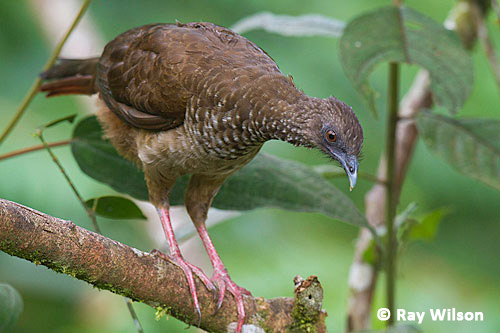
Speckled Chachalaca (Ortalis guttata)
Located only a couple of kilometres from the Bombuscaro entrance to the Podocarpus National Park, the Cabanas de Copalinga was one of my favourite places that I stayed during my trip to Ecuador. As well as the extremely hospitable hosts, comfortable cabins and fantastic food there was always plenty of bird activity around the feeders and trails to keep my trigger finger happy for the 3 days I stayed there (it should have been 4 days, but I had a nightmare of a journey getting Ecuador from the UK and ended up losing a day due to delayed flights and missed connections).
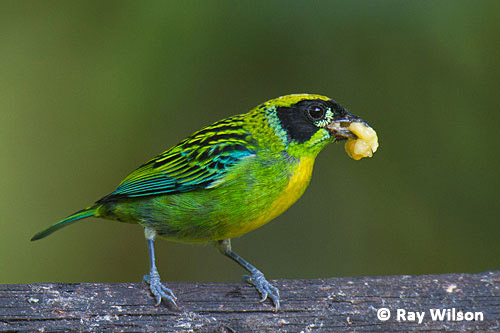
Green-and-gold Tanager (Tangara schrankii)
A large portion of my time was spent staking out the fruit and hummingbird feeders around the restaurant where several species of colourful tanagers and hummingbirds could usually be found.
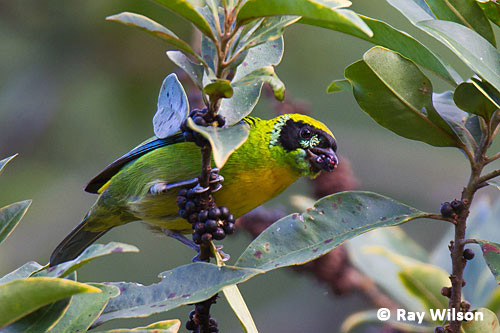
Green-and-gold Tanager (Tangara schrankii)
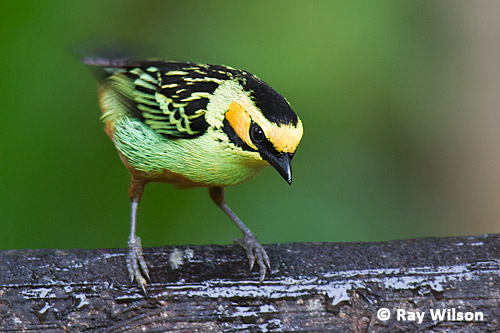
Golden-eared Tanager (Tangara chrysotis)
The very common Blue-grey Tanager occurs in two very distinct subspecies in Ecuador. At Copalinga, in the southeast of the country, all the birds you will see belong to the race caerulea which is characterised by its broad, bright white greater and median coverts. By comparison, birds on the western slope of the Andes belong to the subspecies quaesita and have entirely blue wings (examples of that race are shown on the Buenaventura page).
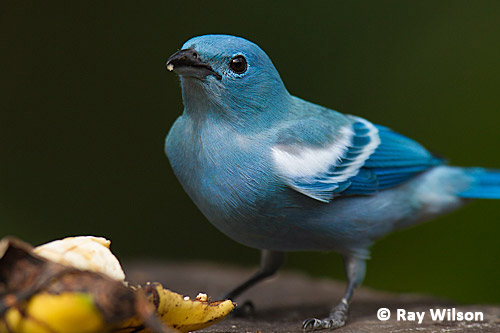
Blue-gray Tanager (Thraupis episcopus caerulea)
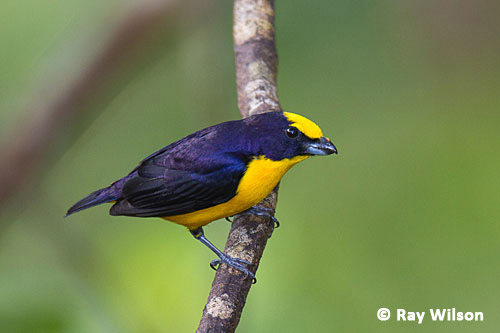
Thick-billed Euphonia (Euphonia laniirostris)
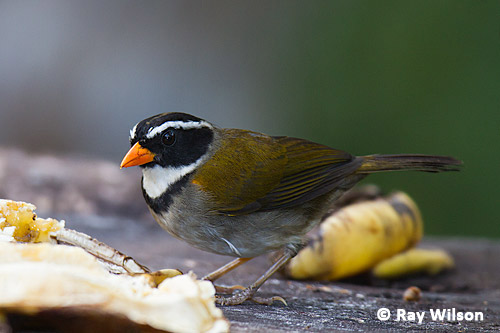
Orange-billed Sparrow (Arremon aurantiirostris)
Other birds regularly attracted to the fruit on the feeding tables included the rather handsome Orange-billed Sparrow, Buff-throated Saltator and Greyish Saltator.
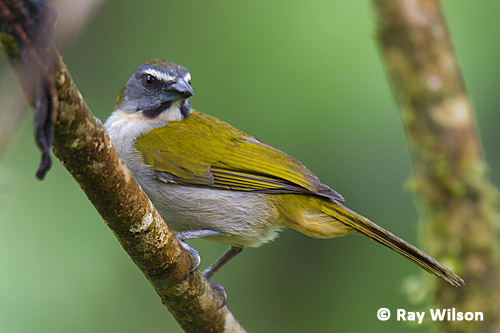
Buff-throated Saltator (Saltator maximus)
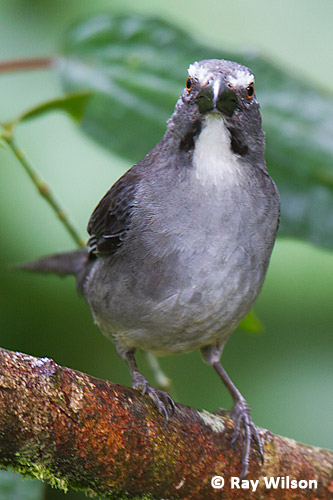
Greyish Saltator (Saltator coerulescens)
The commonest hummingbird around the feeders was the super-aggressive Sparkling Violetear. Although it is a very beautiful bird, its extreme territorial behaviour can be a bit annoying at times as they spend a large portion of their time chasing off all other hummingbirds that come anywhere close to the feeders.
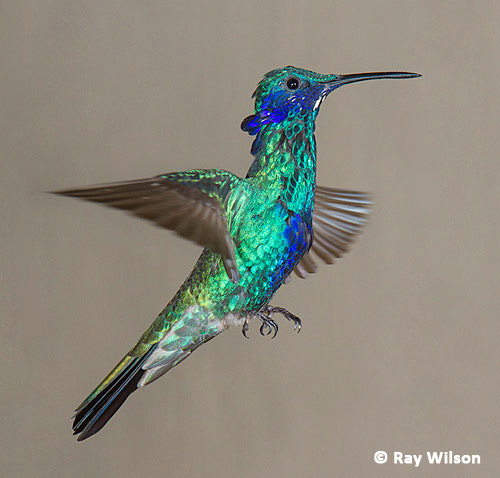
Sparkling Violetear (Colibri coruscans)
Thankfully they are not entirely succussful all of the time and several other species regularly visited the feeders.
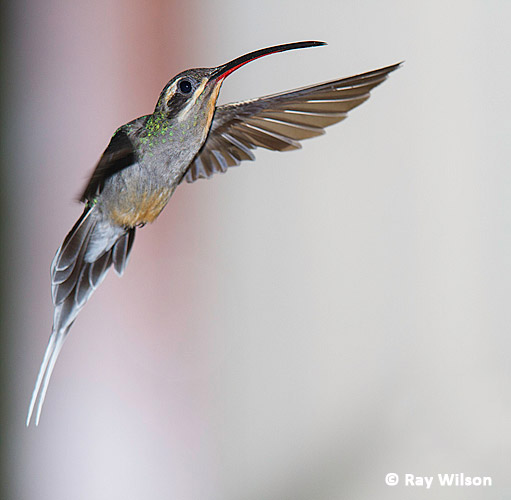
Green Hermit (Phaethornis guy)
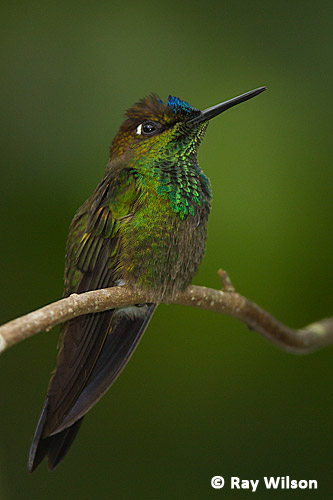
|
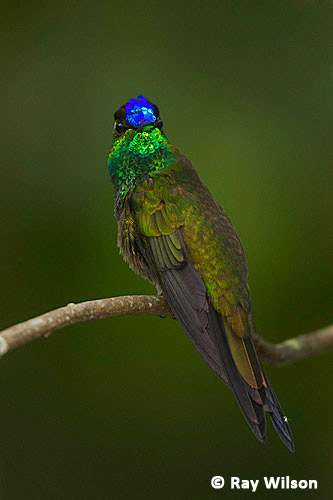
|
Violet-fronted Brilliant (Helidoxa leadbeateri)
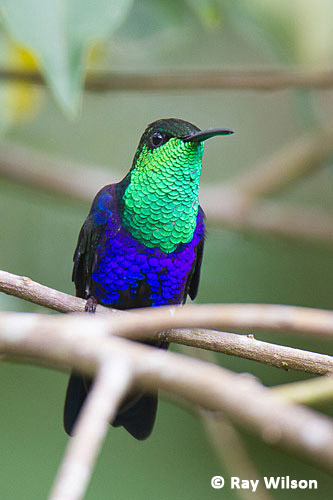
Fork-tailed Woodnymph (Thalurania furcata) |
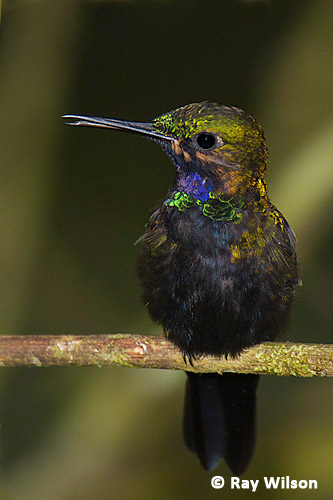
Black-throated Brilliant (Heliodoxa schreibersii) |
The verbena bushes around the parking area are another good spot for watching the hummingbirds as they come to feed on the flowers but, again, the Sparkling Violetears were a bit of a nuisance and the most interesting species, Little Woodstar and Spangled Coquette, generally didn't appear until very late in the afternoon when the light was rapidly fading to dusk making it extremely difficult to photograph these two tiny hummingbirds. Unfortunately, I didn't manage to get any photos of the Spangled Coquette in sharp focus, but a couple of the Little Woodstar came out not too bad...
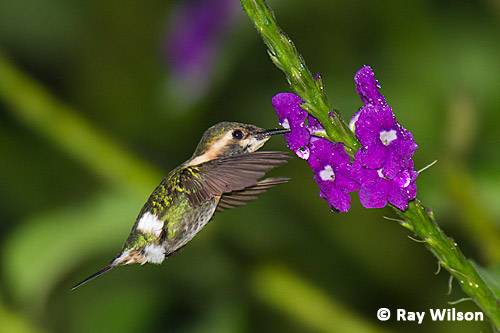
female Little Woodstar (Chaetocercus bombus)
Another tiny hummingbird present at the lodge is Wire-crested Thorntail. These were regularly seen displaying high above the Cecropia trees, but they also occassionally came down low enough to be within range of my 600mm lens.
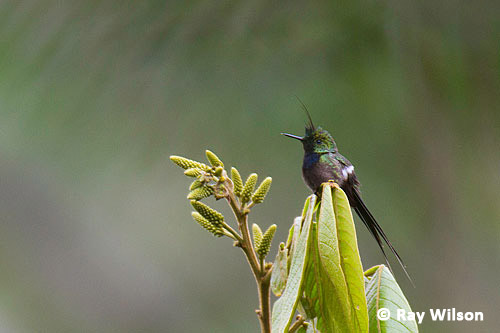
Wire-crested Thorntail (Discosura popelairii)
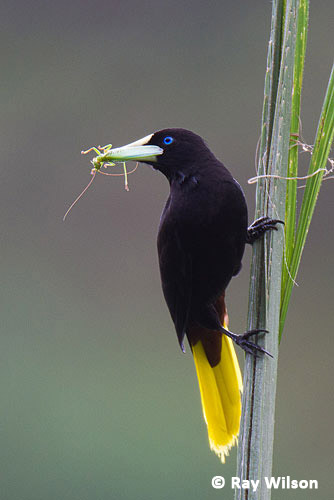
|
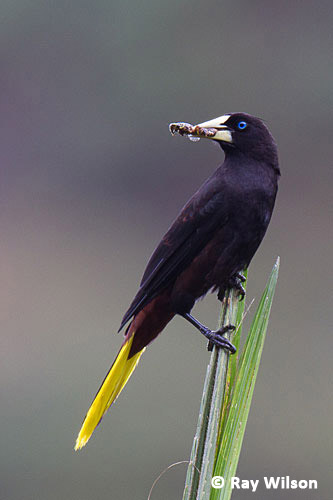
|
Crested Oropendula (Psarocolius decumanus)
About 500m back down the road towards Zamora there is a Crested Oropendula colony in the palm trees beside the river.
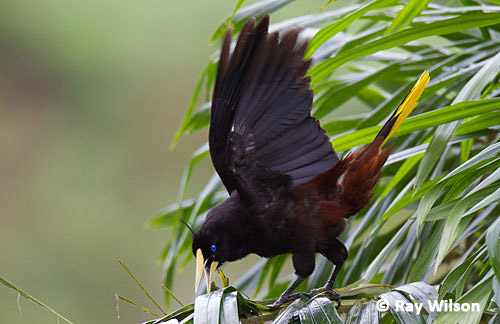
Crested Oropendula (Psarocolius decumanus)
After dark, the lights around the restaurant building attract a good range of insects...
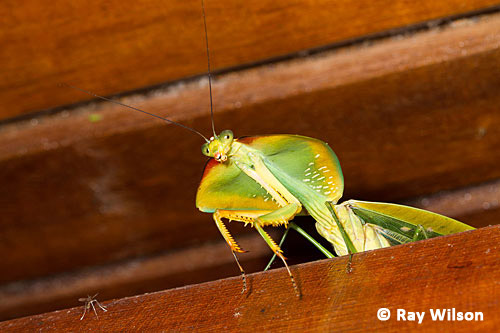
Mantis sp. (Mantodea)
The female Megaloptera below was around 10cm long. Males are similar but their mandibles are about double the length.
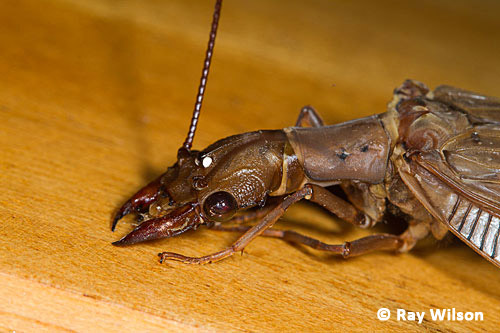
female Dobson Fly sp. (Megaloptera)
Over 30 species of Sphinx moths have been identified at the lodge.
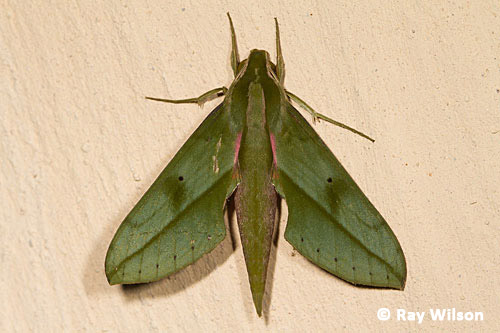
Xylophanes rothschildii
I also spent a bit of time doing macro photography at the nearby Podocarpus National Park.
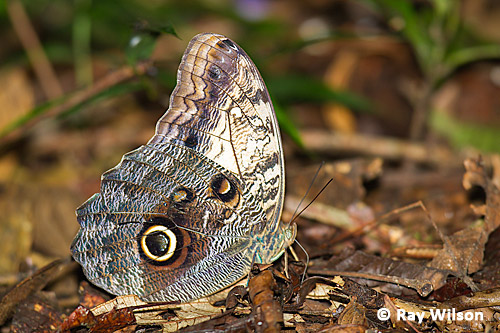
Owl Butterfly (Caligo sp.)

Leaf-cutter Ant (Formicidae)
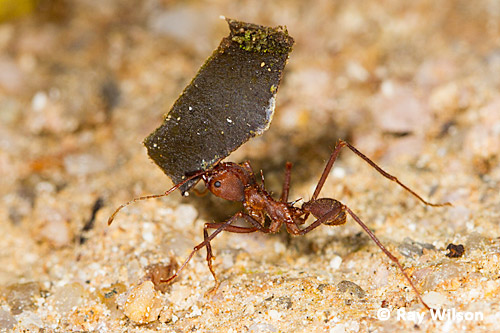
Leaf-cutter Ant (Formicidae)
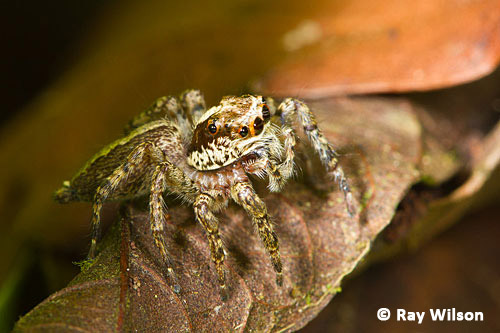
Jumping Spider (Salticidae)
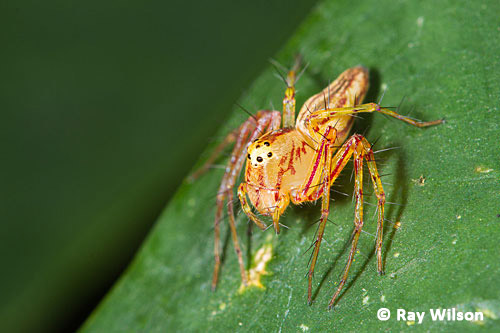
unidentified Lynx Spider (Oxyopidae)
On the final day of my stay at Copalinga, Catherine, the owner of the lodge, accompanied me on a short walk up some of the trails. Birdlife was fairly quiet that morning but we were at least rewarded for our efforts by prolonged views of a cooperative Green Manakin.
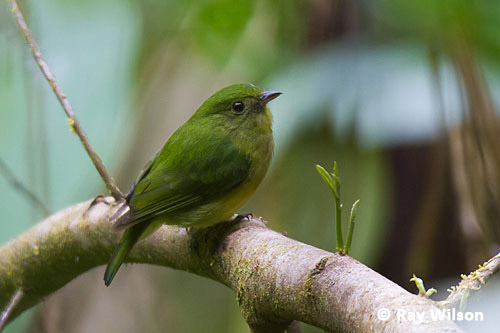
Green Manakin (Chloropipo holochlora)
| Tapichalaca |
Ray Wilson owns the copyright of all images on this site.
They may not be used or copied in any form without prior written permission.
raywilsonphotography@googlemail.com